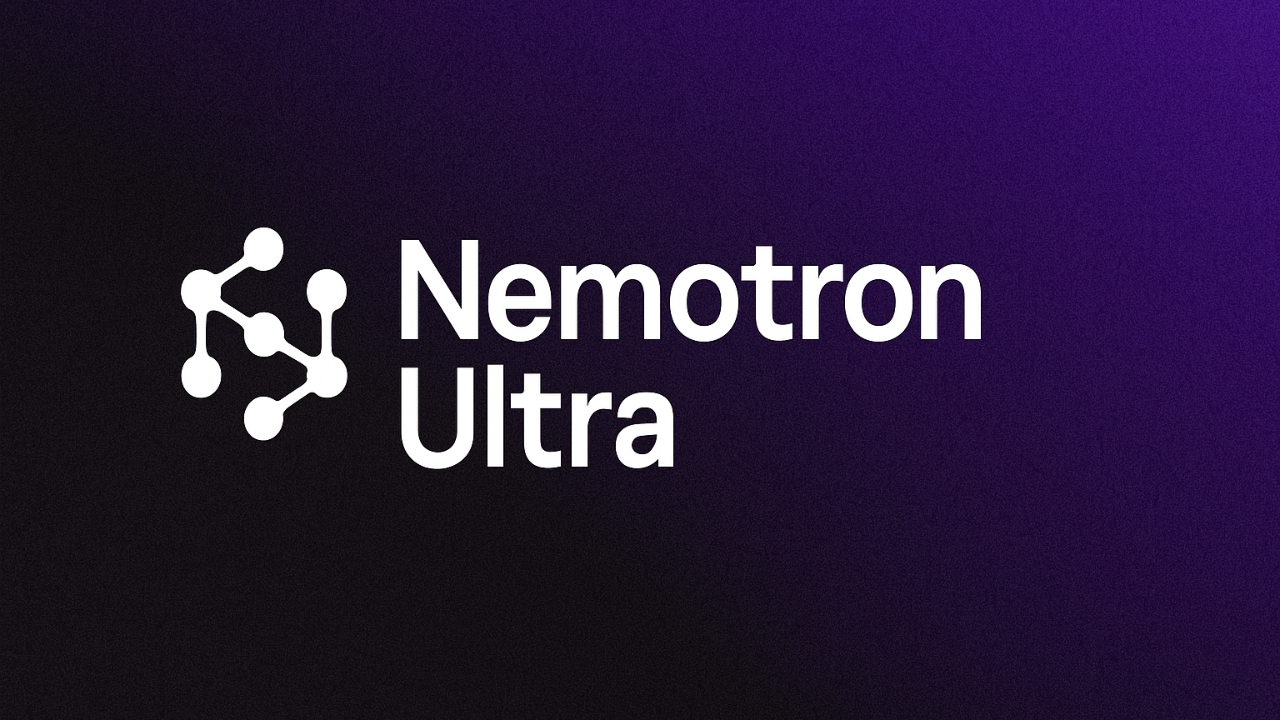In a bold leap forward for artificial intelligence, Nvidia has introduced its latest large language model (LLM), Nemotron Ultra. Boasting a staggering 253 billion parameters, this open-source AI model has quickly made waves in the tech world by outperforming some of the most advanced models to date, including DeepSeek R1 and LLaMA 4.
Nemotron Ultra is more than just a massive model. It is a highly optimized, efficient, and versatile AI tool designed to excel at a wide range of tasks—from complex code generation to intricate mathematical problem-solving and detailed instruction-following. What sets Nemotron Ultra apart is not only its raw computational power but also its intelligent architecture and dual operational modes that allow it to dynamically adjust its reasoning approach.
One of the most innovative features of Nemotron Ultra is its unique dual-mode functionality: “reasoning on” and “reasoning off.” These modes let the AI switch between deep, analytical processing and fast, lightweight thinking depending on the task at hand.
In “reasoning on” mode, the model dives deep into problem-solving, capable of handling complex logic chains and abstract reasoning—ideal for tasks like programming, advanced mathematics, and high-level decision-making. Contrary to that, “reasoning off” mode is focused on speed and efficiency. It allows models to create responses rapidly for prompts that are simpler, general conversations, or fast simulations.
This allows researchers and developers the possibility of fine-tuning AI performance to suit specific scenarios, and strike the right equilibrium between speed and accuracy.
Nemotron Ultra’s structure was designed with Neural Architecture Search (NAS), A machine-learning technique that automates the creation of neural networks, allowing them to improve performance as well as efficiency. Neural Architecture Search allows more sophisticated designs than manually designed models, resulting in higher-quality output and improved utilization of computational resources.
This method of design can help Nemotron Ultra outperform larger models and requires less hardware and thus making it an affordable option for companies seeking to make use of cutting-edge AI without huge infrastructure investment.
Despite facing off against industry giants such as DeepSeek R1 and LLaMA 4—both of which have been benchmark leaders—Nemotron Ultra consistently delivers superior performance in a wide array of tasks. Early evaluations show that the model surpasses its competitors in areas such as coding accuracy, language comprehension, and mathematical precision.
The remarkable performance isn’t solely due to the top-end structure of the model, however, it also comes from the specific layout of Nvidia that is optimized to work in the real world. Instead of just increasing the parameters of the model, Nvidia designed the system to maximize the efficiency of its use in real-world applications.
In another industry-leading move, Nemotron Ultra supports extended context lengths of up to 128,000 tokens. This feature allows the model to maintain coherence and recall across long documents, codebases, or conversations—making it ideal for use in long-form content generation, legal analysis, research assistance, and enterprise applications.
By being able to process and retain much longer sequences than typical models, Nemotron Ultra can engage in more meaningful, sustained interactions with users, thereby increasing its usefulness in complex real-world scenarios.
Nvidia has also ensured that Nemotron Ultra can run on widely available hardware. Particularly, the model is specifically designed for an 8xH100 set-up that is the most common configuration for data centers and enterprises. AI environment. This makes the model less expensive and simpler to use in comparison to models that require a large infrastructure.
In lowering the barriers to entry into advanced AI, Nvidia is enabling more businesses and researchers to take advantage of advanced language modeling capabilities.
With the release of Nemotron Ultra, Nvidia has reaffirmed its commitment to open-source development. By making such a powerful model openly available, the company is encouraging innovation, collaboration, and transparency in the AI community.
It is anticipated that the release will spark a fresh wave of research and applications in areas like software engineering, automatized learning, scientific discovery and smart virtual assistants. Nvidia’s decision to release the model as open-source also aligns with growing calls for AI democratization and responsible innovation.
As AI models become more advanced and are more fully interspersed with society, technology such as Nemotron Ultra can be a key factor in creating the future of computer-human interaction. The ability to be able to think deeply or quickly react based on the current situation is a thrilling future direction in flexible and smart technology.
With Nemotron Ultra, Nvidia hasn’t just raised the bar—it has redefined what’s possible in open-source AI.

